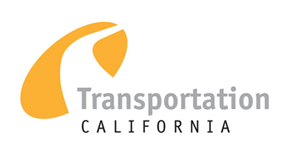
Californians deserve transparent and accountable government. Transportation California helps ensure that the public knows how their tax dollars are being spent through education and outreach efforts. We have developed a suite of informative documents about California’s multimodal transportation network, including facts and statistics about the statewide transportation network and how transportation infrastructure is funded, including reporting on annual SB 1 (the Road Repair and Accountability Act of 2017) projects and expenditures.
RESOURCES:
During economic downturns and recessions, past State Legislatures and Governors raided transportation infrastructure funding for other purposes. After years of transportation funding being diverted for non-transportation purposes, California’s voters passed a series of ballot initiatives that put a lockbox around transportation tax dollars. Transportation California helped develop and pass these measures and continually works to ensure constitutionally protected funding for transportation infrastructure projects is dedicated and used for its intended purposes.
RESOURCES:
Transportation is vital to California’s economy. The State has done its part to generate robust, dedicated, and sustainable transportation funding with the passage of SB 1 in 2017 which generates approximately $5.4 billion annually to maintain, improve, and make safer California’s streets, roads, and bridges, relieve congestion, increase goods-movement, and provide more transit, bicycle and walking options. Moreover, there are 25 “self-help counties’ with super majority-approved local sales tax measures that also generates billions annually for multimodal transportation purposes. But, to successfully build a world-class transportation system, California requires a strong federal partnership. We advocate for robust federal surface transportation programs to keep California moving and thriving. Here are some additional resources related to federal transportation funding matters pending in our Nation’s Capital.
RESOURCES:
California is a leader in the global fight against climate change. The State has committed to reducing greenhouse gas (GHG) emissions by 40 percent below 1990 levels by 2030. To achieve these ambitious but achievable goals, all sectors of the economy must play a part. The transportation sector’s role is three-fold: vehicles, fuels, and achieving transportation system efficiencies through sustainable land use and affordable housing policies. The State’s overarching plan to achieving GHG emissions reductions across all sectors is outlined in the AB 32 Scoping Plan that the California Air Resources Board (CARB) updates every five years.
SB 375 – landmark legislation passed in 2008 that sets forth how California will reduce GHG emissions from the transportation sector – requires each of California’s 18 regional Metropolitan Planning Organizations (MPOs) a Sustainable Communities Strategy (SCS) in their long-range regional transportation plans. The SCSs identify strategies to reduce GHG emissions from driving and provide a range of other benefits including public health, the environment, social justice, and access to opportunities, if implemented. CARB also has helpful resources for more about SB 375 implementation.
Despite these ongoing efforts, California still needs to actively mitigate against and adapt for the effects of climate change that are already playing out across the state as increasing temperatures, sea level rise and storm surges, larger wildfires, and heavier rain storms. These impacts pose a dangerous risk to our built and natural environment, including our statewide multimodal transportation infrastructure. Visit the California Department of Transportation Climate Change Webpage for more information on their climate change efforts, including their recently completed Vulnerability Assessments.
SB 743 Implementation
Transportation California is monitoring implementation of another ambitious measure in the transportation-climate change policy interface – SB 743 which was adopted by the California State Legislature in 2013 and took effect July 1, 2020. SB 743 states that traffic congestion shall not be considered a significant impact on the environment and required the Governor’s Office of Planning and Research (OPR) to develop proposed revisions to the California Environmental Quality Act (CEQA) Guidelines establishing criteria for determining the significance of transportation impacts of projects within transit priority areas. SB 743 also authorized, but did not require, OPR to develop alternative metrics to level of service for transportation impacts outside of transit priority areas. In December 2018, the California Natural Resources Agency has finalized the SB 743 rulemaking and certified and adopted the CEQA Guidelines.
RESOURCES:
